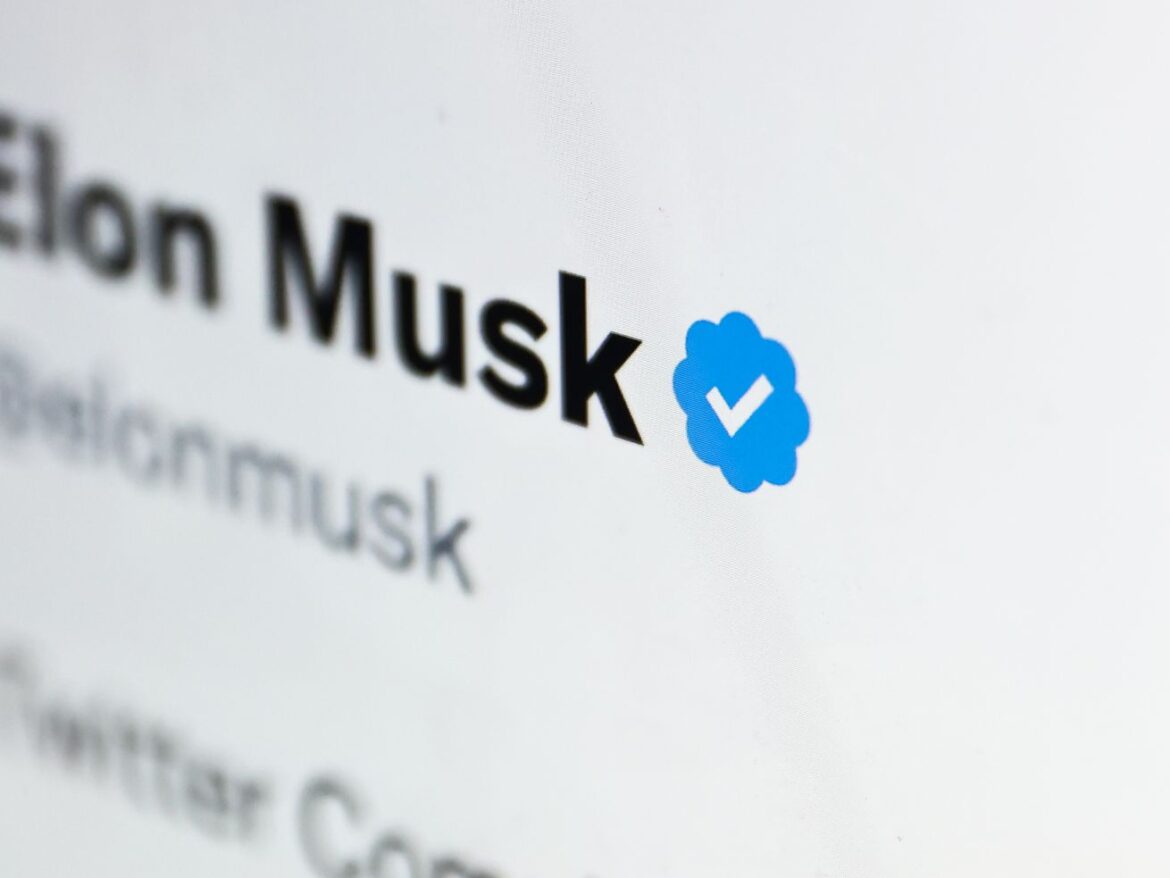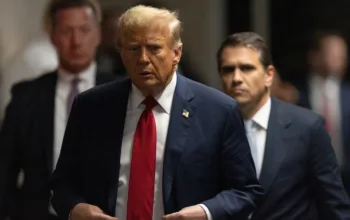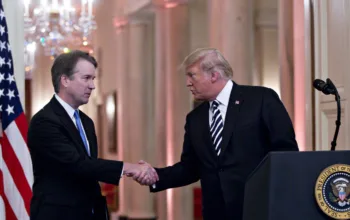Twitter is finally taking away those free blue “legacy” checks to give its paid Twitter Blue service a boost.
It didn’t take long for Elon Musk to weaponize his shiny new $44 billion toy. In less than six months since he took over Twitter, he’s laid off thousands of people, cut Twitter’s valuation in half, released cherry-picked “Twitter files” that purportedly show how pre-Musk Twitter was biased against conservatives, welcomed formerly banned accounts back into the fold, made a few changes to the product, and promised many more.
But the most controversial Twitter product update so far is what he’s done to verification. Verification used to be a way for users to know that a profile belonged to the person or organization it purported to be. It was reserved for the accounts that would need such an indicator, including those of famous people, companies, and journalists, who got blue check marks appended to their profiles to make that verification easy for everyone to see.
It has now become a symbol of who is willing to pay $8 a month for “Twitter Blue.” Or, in the case of organizations, a symbol of who is willing to pay at least $1,000 a month.
The long-threatened removal of pre-Musk “legacy” blue checks is finally in progress, though it’s going slowly because checks have to be removed manually. That means Musk’s Twitter Blue, which hasn’t gotten much traction so far, will truly be put to the test. How many people and companies are willing to pay for the checkmark they used to get for free? And will more regular users want to pay once they see their favorite celebrities and brands are, too?
Musk’s big gamble may yet pay off. Platforms like Meta are even following his lead. For now, however, Twitter’s verification system has become a confusing mess of shifting timelines, “verified” fake accounts, and an ever-deteriorating experience for most of Twitter’s users by design — all to “democratize” whatever verification is now and squeeze money out of Twitter’s users and Musk’s biggest fans.
What the blue checks mean now
A few weeks after he took control of Twitter, Musk turned its Blue paid subscription service, which allowed users to get a few special features like the ability to edit tweets and a special profile photo shape for their NFTs, into a way for users to get blue checks on their profiles. He also said he would take blue checks away from accounts that didn’t pay up. Twitter Blue is $7 a month for people who sign up for an entire year, $8 a month on a per-month basis, and $11 a month if people sign up through Apple’s App Store or Google Play. The higher app store price is because Musk got mad that the app stores take a commission, although the extra $3 a month amounts to far more money than the app stores’ 15 to 30 percent commissions.
Musk framed the move as a way to open up Twitter’s blue checks, which to some had become a symbol of unfair and much-desired privilege that was bestowed upon people they didn’t like.
The rollout has not been smooth, to say the least. Musk has been forced to suspend and delay it several times. An early attempt resulted in what should have been a predictable flood of “verified” impersonators of everyone from LeBron James announcing he wanted to be traded to Eli Lilly saying its insulin products were now free. Twitter has implemented new guardrails to try to prevent these issues every time a new one pops up. But the core problem remains that Twitter is no longer verifying the identity of users who get a blue check, nor is it a symbol of authenticity. Anyone who has a phone number and a credit card can appear “verified,” though Twitter supposedly vets accounts to ensure they’re not pretending to be someone else when they initially sign up, and temporarily takes their blue check away if they change their names or profile photos.
For the first few months of the new program, Twitter was also differentiating between the blue checks that were given to Twitter Blue subscribers and which were given to notable accounts before Musk’s takeover. You could click the checkmark to see a prompt explaining which category a given user fell into. But being labeled a paid account soon became a source of shame. On April 1, the date that Musk said Twitter would be removing blue checks from legacy accounts, the prompt changed. Now, the prompt simply says the account with the checkmark might be a paid account or it might be a legacy verified account. Supposedly, the legacy check marks will soon disappear altogether.
/cdn.vox-cdn.com/uploads/chorus_asset/file/24558228/Screenshot_2023_04_03_at_4.19.27_PM.png)
Screenshot courtesy of Twitter
Musk also introduced a rainbow of checkmarks. Blue checks are for individuals. Government accounts get a gray check. Organizations get a square profile photo and gold check. Accounts that are associated with organizations get little icons with that organizations’ logo. But that’s only if those organizations are willing to pay a hefty price: the gold check is $1,000 a month, plus another $50 for each associated account.
Why would anyone pay for any of this? Increasingly, Musk has made paid Twitter about more than just the checks. The benefits from the previous Twitter Blue subscription are still there, and now you can tweet up to 4,000 characters and upload longer videos. You should eventually see fewer ads (this particular benefit has been “coming soon” for several months now). Twitter is also taking things that used to be free for all accounts and limiting them to just the paid ones to make the service seem more valuable. Two-factor authentication through text messages is now only given to paid accounts (the rest have to use an authenticator app). And starting April 15, only verified accounts will be able to vote in polls. Musk says that verified accounts will soon get prominence in search, and only verified accounts will soon be shown in the new For You tab.
It’s likely that, as time goes on, more and more features will be taken away from free accounts, and new features will be made available only to paid accounts, as Musk seems determined to make Twitter’s subscription-based business model work and ad revenues continue to plunge. So far, only a fraction of Twitter accounts have subscribed. Now that Musk is purportedly forcing legacy accounts to pay up to stay verified, however, those numbers may change. That’s assuming, of course, that being on Twitter and having that prominence continues to be as valuable as it was before Musk bought it.
Many legacy check holders have already said it isn’t. Celebrities including William Shatner, Jason Alexander, and LeBron James (the real LeBron James this time) have already refused to pay, as have several media outlets. This seems to have annoyed Musk, who personally requested that the gold check be removed from the main New York Times account after it was brought to his attention that the newspaper had said it would not pay for it.
But many of those organizations may not have to pay at all. According to the (no longer verified) New York Times, Twitter will allow its 500 top advertisers and 10,000 most-followed organizations to keep their checks.
What those blue checks used to do and why
If you’re one of the many people in the world who don’t use Twitter, you may not understand exactly what a blue check is, why you should care about it, or why it seems to be so crucial to Musk’s business plan for Twitter. You may think none of this applies to you. Directly, it probably doesn’t.
But the blue checks are about more than just a badge next to a name. (Also: The blue checks are actually white checks inside a blue circle with scalloped borders.) Like many of Twitter’s best and most enduring features, the verification badges were an attempt to solve a problem Twitter also created.
Twitter began verifying accounts in 2009 to settle a lawsuit from famous baseball guy Tony La Russa over a fake Tony La Russa account. Back then, it was relatively easy to squat on a famous person’s name and make a fake account pretending to be them. That’s why Donald Trump had to go with “@realDonaldTrump” when he joined Twitter; someone had already taken @donaldtrump and made it a Trump parody account. Tina Fey says she’s never been on Twitter, but a lot of people sure thought @TinaFey (now @NotTinaFey) was her. And then there are the many, many Fake Will Ferrell Twitter accounts. That said, like most things Twitter, verification isn’t perfect: Author Cormac McCarthy’s fake account was somehow verified as recently as 2021.
/cdn.vox-cdn.com/uploads/chorus_asset/file/24558215/GettyImages_1246183658.jpg)
Angela Weiss/AFP via Getty Images
Twitter first doled out the checks to high-profile and official accounts, then expanded the program to accounts that weren’t necessarily celebrities. That group included accounts run by the people and institutions they claimed to be associated with — namely, politicians, brands, and journalists.
To give you an idea of what Twitter was like back when those blue checks were harder to come by, and the world we may return to now that “verification” can only be bought: Back in 2012 or so, the process for being verified was even more opaque and arbitrary than it is today. You got verified if you were famous enough that someone at Twitter decided you needed it, or if you knew someone at Twitter, or if the publication you worked for had an in with Twitter’s small Journalism & News team. Back then, a blue check was kind of special because it was rarer and you had to be somebody or know somebody to get it.
In 2016, Twitter let people apply to be verified. Now there were many more blue checks out there, although some people who probably should have gotten blue checks were denied and some people who really shouldn’t have gotten them were accepted. When people started asking why white supremacists were getting blue check marks, Twitter revoked the badges and closed down the verification application process altogether. The company only reopened it in 2021.
Before Musk’s changes, there were about 425,000 verified accounts, according to @verified. That was enough for the blue check to no longer be the exclusive special symbol it was once seen as, but it was also a small percentage of Twitter’s total user base, which, before Musk’s takeover, Twitter put at 240 million monetizable (as in, actual people and not bots) daily active users.
Elon Musk’s obsession with verification
So why are blue checks so important to Musk? Likely because he assigns a value to them that he thinks the vast majority of Twitter’s users share, and so they would be willing to pay for it as soon as they were given the chance. Plus, messing with them is a great way to hurt journalists, a profession he really doesn’t like, especially when he thinks it’s being mean to him. It’s also a way to appeal to the right-wing base to which he’s become some kind of savior.
Before Musk’s reign at Twitter, the right wing had also made “blue check” into a pejorative, using it to collectively describe and dismiss supposed liberal elites — especially journalists and supposedly woke SJW celebrities. (Some of the same people who make fun of blue checks also have blue checks, but somehow theirs don’t count.) Then there’s the fact that Twitter “punished” certain accounts by taking away their blue checks, which upset one blue check-loser so much that he tried to tell on Twitter to the White House.
To some, blue checks were seen as a mark of privilege, something they couldn’t have that was possessed by people they didn’t like. There was a sense that being verified was extremely important to the ego-driven, left-wing elitist journalist, and that they couldn’t live without their little badges or the thought of the unwashed masses having them, too. So if you’re Elon Musk and looking for a way to make money, stick it to people you don’t like, and please your adoring fans, charging for a blue check might seem like a great way to accomplish all three in one fell swoop. Bonus points for framing it as a way to “bring power to the people” and get rid of Twitter’s “current lords and peasants system” … as long as, you know, the peasants can pay $8 a month to become a lord. It also means compromising one of the very things the verification system was designed for.
/cdn.vox-cdn.com/uploads/chorus_asset/file/24146479/GettyImages_1244262469__1_.jpg)
Twitter account of Elon Musk/AFP via Getty Images
Musk says this method of verification is “the only way to defeat the bots and trolls” because it will cost them too much to create accounts that will either lose their blue check or be banned for violating Twitter’s rules. But Twitter still has a free tier, and if the vast majority of Twitter users won’t pay for Twitter, that’s where most of the action will stay. That could be a real problem for Twitter. If the pool of paid accounts is limited to a few hundred thousand or million Musk fans, right wingers, toxic users, and crypto bros, then that blue check will be even less desirable. And Twitter the platform, with only a select group of people being thrown into users’ For You feeds, won’t be much fun either.
For people who aren’t verified and have always wanted to be, it’s understandable why getting a blue check, even by paying for it, is so attractive. But Musk and his acolytes, who seem to think blue checks are only about status, don’t seem to get why the company has, over the years, chosen who and what the platform should verify and amplify (or suppress). Twitter is a business, and it made business decisions to minimize objectionable and harmful users and content. That includes things like misinformation, racial slurs, conspiracy theories, state-sponsored propaganda campaigns, and calls to violence.
It never did those things perfectly, but it knew why it had to try: Users generally didn’t want to see that stuff, advertisers didn’t want their products featured alongside it, and it’s a really bad look for a company to be seen as a purveyor of harmful content, to the point that it’s partially blamed for a genocide.
Musk appears to be throwing all of that away rather than learning from it and continuing to improve the company he’s already sunk so much of his money and reputation into.
It’s not just a matter of people who spread harmful content getting verified and being able to spread it even more widely. It’s also a matter of a lot of accounts that were verified for good reason losing that status because they understandably don’t want to pay for it. Their posts will be shoved down under those of the paid users, and that’s if they continue to use the service at all.
Meanwhile, people are willing to pay a little more to spread misinformation, and Twitter no longer has rules against that, nor does it have the content moderators needed to remove it at scale. Twitter is sure to become an even greater amplifier of harmful lies than it already is. Musk doesn’t seem to care about that aspect of verification or see why it’s important. When blue checks are solely about getting more money, it doesn’t really matter who is willing to pay or why.
There’s reason to believe that the blue check won’t be much of a status symbol — if it ever was one — when anyone who has $8 to spare can get it, and especially once the legacy checks go away. (Dr. Seuss taught us this a long time ago.) But hey, this is the guy who built a reusable rocket, thanks in part to his vision but mostly to SpaceX’s talented engineers and massive government subsidies. He may well see something in Twitter and blue check payola that the rest of us don’t. Perhaps all of these seemingly spur-of-the-moment decisions were actually carefully considered and months in the making.
If not, the blue check will soon only signify that the name it’s next to was willing to pay for something that used to be free. As Musk himself tweeted, “you get what you pay for.” Now we’ll see what it’s actually worth.
Update, April 3, 2023, 5 pm ET: This story was originally published on November 4, 2022, and has been updated several times to include changes to Twitter Blue.



